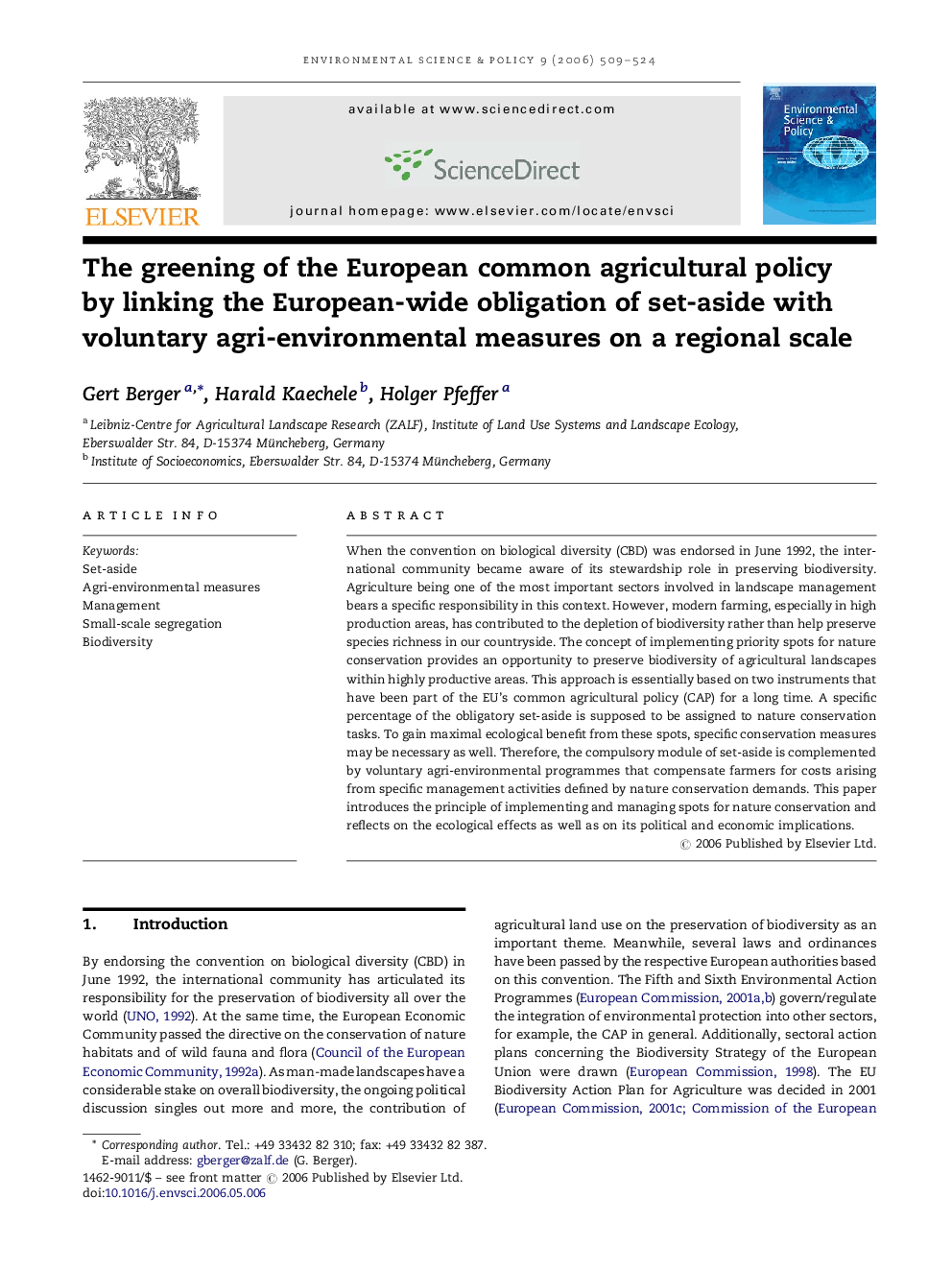| Article ID | Journal | Published Year | Pages | File Type |
|---|---|---|---|---|
| 1054377 | Environmental Science & Policy | 2006 | 16 Pages |
When the convention on biological diversity (CBD) was endorsed in June 1992, the international community became aware of its stewardship role in preserving biodiversity. Agriculture being one of the most important sectors involved in landscape management bears a specific responsibility in this context. However, modern farming, especially in high production areas, has contributed to the depletion of biodiversity rather than help preserve species richness in our countryside. The concept of implementing priority spots for nature conservation provides an opportunity to preserve biodiversity of agricultural landscapes within highly productive areas. This approach is essentially based on two instruments that have been part of the EU's common agricultural policy (CAP) for a long time. A specific percentage of the obligatory set-aside is supposed to be assigned to nature conservation tasks. To gain maximal ecological benefit from these spots, specific conservation measures may be necessary as well. Therefore, the compulsory module of set-aside is complemented by voluntary agri-environmental programmes that compensate farmers for costs arising from specific management activities defined by nature conservation demands. This paper introduces the principle of implementing and managing spots for nature conservation and reflects on the ecological effects as well as on its political and economic implications.
